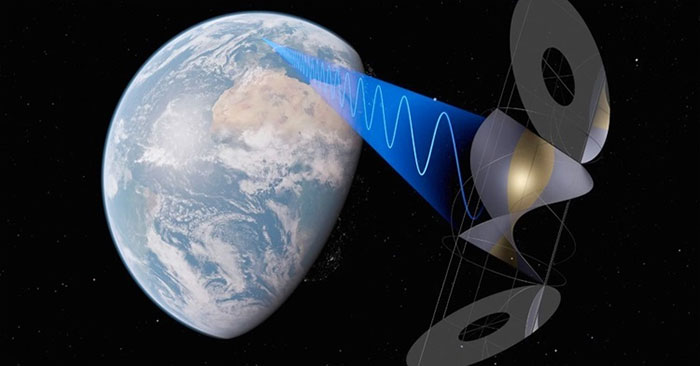The process of transmitting solar electricity from space to Earth
To produce solar electricity in space, we will need to place photovoltaic cells in high geostationary orbit and convert electricity into microwaves. Microwaves can easily penetrate clouds and bad weather, reaching antennas at receiving stations on Earth, where the signal is converted back into electricity and fed into the power grid.

This wireless energy transfer process allows electricity to be transmitted to remote locations on Earth, many remote Arctic towns and villages are in complete darkness for months each year, and supports communities power outages due to natural disasters or conflicts, and even transmit power in space such as to the moon and other planets.
The biggest challenge of power generation in space is the size of the structure. A satellite equipped with photovoltaic batteries can span more than 1km and weigh thousands of tons. For comparison, the international space station weighs 400 tons and measures 109x73m. Meanwhile, the receiving station on Earth will cover an area 10 times larger.
A satellite installed with photovoltaic batteries can produce 2GW of electricity, equivalent to two medium-sized nuclear power plants in the US, enough to supply one million households. To produce the same amount of electricity, more than 6 million photovoltaic panels would be needed on the Earth's surface.
You should read it
- How to recover and improve performance for battery-powered laptop batteries
- How to charge, battery car questions when the car is dead
- How to Clean Battery Terminals
- Don't, and exactly, never leave your phone down to 0% battery!
- How to Restore your phone's battery
- How to discharge laptop battery properly and effectively
 Summary of 12 ways to quickly access the Settings application on Windows 10
Summary of 12 ways to quickly access the Settings application on Windows 10 PowerShell and everything you need to know about it
PowerShell and everything you need to know about it How to fix NVIDIA Control Panel disappearing error in Windows 11/10
How to fix NVIDIA Control Panel disappearing error in Windows 11/10 How to install and set up Windows 11 without an Internet connection
How to install and set up Windows 11 without an Internet connection How to fix Mac Homebrew error 'zsh: command not found: brew'
How to fix Mac Homebrew error 'zsh: command not found: brew' The world's largest 3D printing neighborhood is nearing completion
The world's largest 3D printing neighborhood is nearing completion